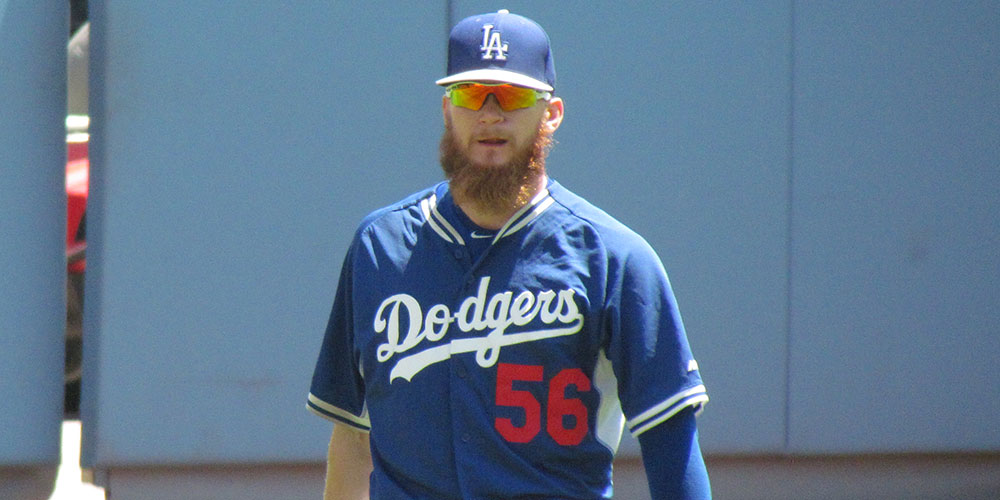
| IP | K% | BB% | HR/9 | ERA | FIP | xFIP | WAR | |
| MLB | 50.2 | 20.0 | 6.8 | 0.71 | 4.09 | 3.50 | 3.59 | 0.2 |
What happened in 2016: Statistically had a decent season, but the numbers were deceiving for the veteran left-hander.
J.P. Howell entered last offseason with a chance to opt-out of the remaining year of his deal. Instead of doing that, as some expected, he opted in at $6.2 million. After a strange 2016 season, it looks like his decision may end up costing him a bunch of money.
The confidence wasn’t there — either by manager Dave Roberts nor with the fan base — anytime Howell came into the game. Just 12 of his 64 appearances came in high-leverage situations. Ironically, that was the situation in which he performed best (.214/.281/.250).
Howell doesn’t have an overpowering fastball by any means (averaged 85.3 MPH), but Howell used his curveball effectively, and I wrote about appreciating the pitch at the end of November of 2015.
“When I was doing research for the fastball-slider lefty post earlier this week, I noticed Howell had a .000 isolated power against his curveball in 2015. I did a double-take and, sure enough, Howell did not allow an extra base hit off his curve in 2015. All 15 were singles — 11 were to right-handers and just four were to lefties. He also induced 27 and 19 swings-and-misses, respectively. For whatever reason, hitters have a hard time making good contact with the pitch. His exit velocity on curveballs put in play was 82.7 MPH (27 occurrences with the available data). It was the lowest exit velo of any of his pitches. The last time he gave up an extra base hit on curveball was on Sept. 26, 2014, when Ben Paulsen of the Rockies hit a home run in Dodger Stadium. Justin Ruggiano doubled on Aug. 3, 2014. Howell has given up two extra base hits in the last two seasons on his bender.”
Fast-forward to 2016 and we can see his curveball wasn’t nearly as effective. He allowed a .117 ISO in plate appearances ending with a curveball, which translates to seven extra base hits (four doubles, two triples and a home run). He also leaned on it more in 2016, throwing it 150 more times than he did in ’15.
Howell got off to a horrific start, as he allowed six hits and six runs in his first inning of work (spanning three outings). He got on track in the middle months by posting a 1.91 ERA May through July (28 1/3 innings), but got knocked around in August and September (5.87 ERA, .370 BAA), which kept him off the postseason roster.
The Dodgers got a lot of production out of Howell in his four seasons in LA. He accumulated a 4.6 RA9 WAR, 1.8 FIP WAR, a 2.49 ERA and a 3.23 FIP. Unfortunately for him, the left-handed pitcher depth chart ahead of Howell includes at least Grant Dayton, Luis Avilan and Adam Liberatore. It really doesn’t make sense to spend money on a guy like Howell, especially after a down season.
2017 status: Free agent. Going into his age-34 season, Howell should still be able to find work, but don’t expect it to be with the Dodgers.
 Dodgers Digest Los Angeles Dodgers Baseball Blog
Dodgers Digest Los Angeles Dodgers Baseball Blog